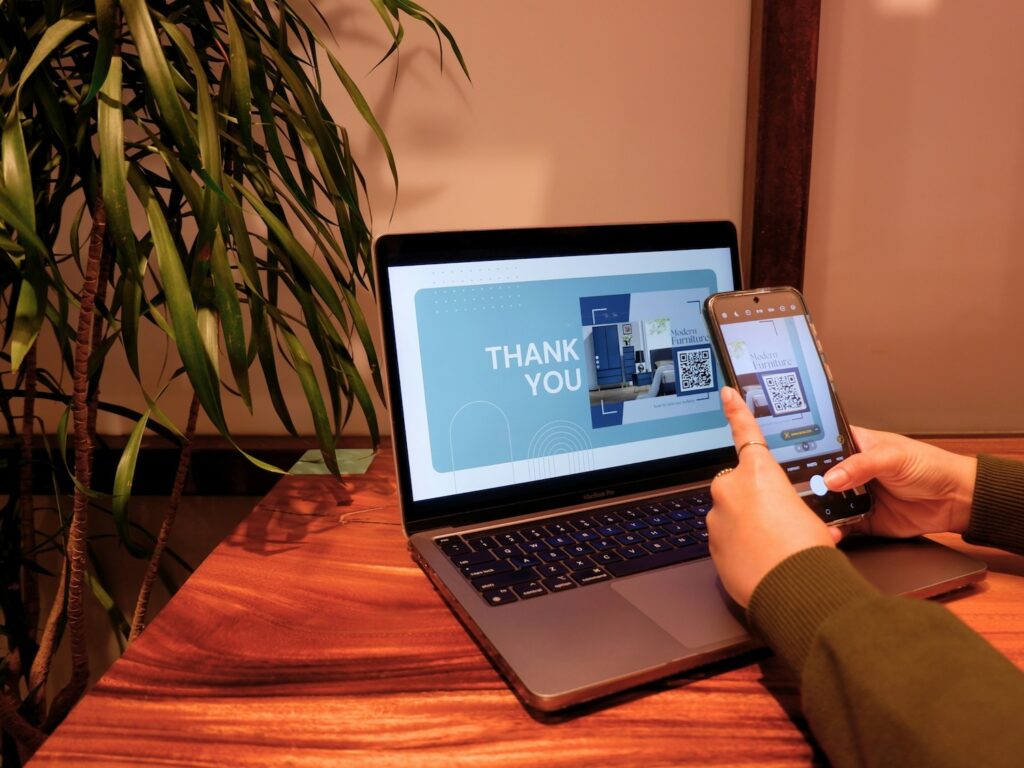Efficient logistics play a pivotal role in the success of e-commerce companies and small businesses. As consumer expectations continue to rise, optimizing the e-commerce supply chain becomes essential for delivering seamless experiences and sustaining growth. This guide explores the top 10 strategies tailored for small businesses to enhance their e-commerce logistics.
From leveraging reliable e-commerce platforms to negotiating shipping rates and embracing advanced technologies, these strategies aim to optimize e-commerce and logistics services, improve customer satisfaction, and contribute to the success of small enterprises in the competitive online marketplace.
Key Takeaways
- Utilize reliable e-commerce platforms like Shopify, WooCommerce, and Square Online to simplify logistics, automate processes, and enhance overall efficiency. Choose platforms that align with the business’s needs, providing scalability and a user-friendly interface.
- Streamlining order processing through automation, incorporating barcode scanning, and maintaining standardized fulfillment procedures are essential for reducing errors and enhancing operational speed. This efficiency contributes to a responsive and agile logistics infrastructure, fostering customer loyalty and sustained success.
- Prioritizing customer satisfaction through clear returns policies, varied shipping options, and a focus on efficient packaging not only ensures a positive shopping experience but also builds trust and loyalty. By embracing technology, negotiating costs, and leveraging fulfillment centers, small businesses can optimize logistics, create a reputable brand image, and thrive in the competitive e-commerce landscape.
1. Use a Reliable E-Commerce Platform
Due to seamless integration, small businesses benefit from reliable e-commerce platforms for optimized logistics. These platforms simplify order processing, inventory management, and real-time tracking while providing robust logistics solutions.
A dependable e-commerce platform ensures accuracy, reduces manual errors, and enhances operational efficiency. Small businesses can focus on growth and increase customer satisfaction while avoiding the complexities associated with unreliable or outdated systems by providing a foundation for automated processes and efficient communication with shipping partners.
Several e-commerce platforms cater specifically to the e-commerce industry and small businesses, offering user-friendly interfaces, scalability, and various features. Here are some examples:
Shopify
Shopify is well-known for being easy to use and adaptable. With an extensive app store, a wide range of customizable designs, and integrated payment options, Shopify enables companies to launch and maintain an online presence quickly. Its user-friendly interface and scalable capabilities make it an ideal option for businesses trying to traverse the difficulties of e-commerce with simplicity and efficiency.
WooCommerce
As a WordPress plugin, WooCommerce proves to be a great option. This e-commerce platform provides unmatched flexibility, scalability, and extensive customization options. With its seamless integration with WordPress, WooCommerce empowers online retailers to easily create and manage their stores, providing a tailored and user-friendly experience. Its compatibility with the WordPress ecosystem makes it a go-to option for small enterprises seeking a robust and customizable e-commerce platform.
BigCommerce
BigCommerce is a cloud-based platform notable for its extensive feature set, scalability, and user-friendly interface. The design is suitable for businesses that want to increase their online presence and offers a solid platform for expansion.
Retailers may easily handle growing needs and transactions because of its smooth scalability. The platform’s user-friendly design streamlines the e-commerce experience, making it an optimum solution for small companies wanting to increase their digital footprint and accommodate increasing business requirements.
Square Online
Square’s e-commerce platform is distinguished by its seamless integration with Square’s payment processing, offering a unified and efficient financial solution. It is known for its user-friendly interface, catering to small businesses and providing numerous tools for streamlined logistics operations.
With cohesive payment integration and a user-centric approach, Square’s e-commerce platform empowers businesses to manage transactions effortlessly, making it an advantageous choice for those seeking simplicity and comprehensive financial tools in their e-commerce operations.
Wix eCommerce
Wix is well-known for its adept website-building capabilities and extends its prowess seamlessly into e-commerce functionality. With its intuitive drag-and-drop builder, Wix makes it easier for small businesses to set up and maintain e-commerce businesses. Businesses may customize their web presence with features that are easy to use and a user-friendly design.
Its all-inclusive website development methodology and e-commerce capabilities make it an advantageous platform for small businesses seeking an easy-to-use and aesthetically pleasing online store.
2. Streamline Order Processing
Efficiency in order fulfillment reduces manual errors, minimizes processing time, and enhances operational speed. Automated order processing systems help maintain accuracy, ensuring a seamless delivery process from purchase to receipt.
By embracing streamlined order processing and delivery processes, small businesses can create a more agile and responsive logistics infrastructure, contributing to increased customer loyalty and sustained success in the competitive e-commerce landscape.
Invest in Order Management Software
Implement a reliable order management system that integrates seamlessly with your e-commerce platform. This software automates order processing tasks, reducing manual efforts and minimizing errors.
Automate Order Confirmation and Invoicing
Set up automated systems for order confirmation and invoice generation. Automation ensures immediate acknowledgment of orders, reducing delays and improving the best customer service and communication.
Utilize Barcode Scanning Technology
Incorporate barcode scanning to expedite the picking and packing process. This minimizes errors associated with manual data entry, accelerates order fulfillment, and enhances accuracy.
Establish Standardized Order Fulfillment Procedures
Develop and enforce standardized procedures for the shipping process, including guidelines for picking, packing, and tracking shipments and delivery routes. Consistency in processes reduces errors and ensures efficient order processing.
Implement a Centralized Dashboard
Utilize a centralized dashboard that provides real-time insights into order status, inventory levels, and shipping updates. A centralized view enables quick decision-making, minimizes delays, and enhances overall operational efficiency.
3. Optimize Inventory Management System
Optimizing the inventory management system is vital for small businesses as it ensures accurate tracking of stock levels, minimizes the risk of overstocking or stockouts and enhances operational efficiency. A well-optimized system allows for real-time visibility into inventory, enabling timely restocking decisions and preventing potential revenue loss due to inventory issues.
Improved accuracy in inventory data facilitates better customer demand and forecasting, reducing carrying costs and preventing excess tying up of capital. Ultimately, an optimized inventory management system empowers small businesses to meet customer demands promptly, enhance cost-effectiveness, and maintain a competitive edge in the market.
4. Offer Multiple Shipping Options
Offering multiple shipping options is crucial for small businesses as it caters to diverse customer preferences, providing flexibility and convenience. This approach enhances the overall customer experience by allowing individuals to choose shipping methods that align with their urgency and budget constraints.
It expands the market reach by accommodating different geographic locations, delivery personnel and varying delivery expectations. Moreover, providing choices in shipping options fosters customer satisfaction and loyalty, as it demonstrates a commitment to meeting individual needs.
In the competitive e-commerce landscape, the ability to offer varied logistics delivery services also contributes significantly to attracting and retaining customers, ultimately driving the growth of e-commerce businesses.
- Standard Shipping. The most economical option with a moderate delivery speed.
- Expedited Shipping. Faster delivery than standard shipping, suitable for customers willing to pay extra for quicker receipt.
- Express or Overnight Shipping. The fastest option, ideal for urgent deliveries with a premium cost.
- Free Shipping. An attractive option to attract customers, either as a promotional offer or for specific order values.
- Flat-Rate Shipping. Charges a fixed rate regardless of the order size or weight, providing transparency for customers.
- Local Pickup. Allows customers to pick up their orders from a physical location, reducing shipping costs.
- Same-Day Delivery. Expedited service that delivers orders on the same day, suitable for local or metropolitan areas.
- International Shipping. Expand the customer base by offering delivery to customers outside the domestic market.
5. Negotiate Shipping Costs
Negotiating shipping rates is crucial for small businesses to optimize operational costs and enhance competitiveness. Securing favorable agreements with carriers allows for reduced shipping expenses, contributing to higher profit margins. Negotiated rates also enable businesses to offer competitive shipping pricing or even free shipping, attracting more customers.
As shipping costs directly impact the overall pricing strategy, effective negotiations provide a strategic advantage in the market. Furthermore, establishing long-term partnerships with third-party logistics carriers through negotiations ensures reliable service and timely deliveries, enhancing customer satisfaction.
In the dynamic e-commerce landscape, efficient shipping negotiations empower small businesses to navigate cost challenges and thrive in a competitive environment.
6. Implement A Returns Policy
Implementing a returns policy is essential for small businesses to build trust, enhance customer satisfaction, and establish a transparent and reliable brand image. A well-defined returns policy assures customers that their concerns are valued, fostering loyalty and repeat business. It also provides a structured process for handling product returns, reducing uncertainty and potential disputes.
By addressing return requests for customer orders promptly and fairly, small businesses can mitigate negative reviews and encourage positive word-of-mouth marketing. Moreover, a clear returns policy contributes to overall customer confidence, making the purchasing experience more risk-free and contributing to long-term success in the competitive e-commerce market.
When crafting a returns policy, small businesses should consider including the following regulations to provide clarity and protect both the customer and the business:
Return Eligibility Period
Clearly define the timeframe within which customers can initiate a return. Specify whether it starts from the purchase date, the final delivery due date, or another relevant milestone.
Condition of Returned Items
Outline the expected condition of items for a valid return. Specify if products must be unopened, unused, or in their original packaging to qualify for a refund or exchange.
Refund Process and Timelines
Detail the steps customers need to follow for returns and provide information on the refund process, including timelines for processing refunds or issuing store credits.
Return Shipping Responsibility
Clarify who is responsible for return shipping costs – whether it’s the customer, the business, or a shared responsibility. Communicate any exceptions, such as covering return shipping for defective items.
Exceptions and Exclusions
Clearly state any product categories or scenarios that are exempt from the standard return policy. This might include final sale items, perishable goods, or personalized/customized products.
Adhering to these regulations helps small businesses set clear customer expectations beforehand, minimize disputes, and establish a fair and transparent returns process for their customers. It’s also important to comply with relevant consumer protection laws in the jurisdiction where the business operates.
7. Invest in Packaging Efficiency
Investing in packaging efficiency is vital for small businesses to optimize costs, reduce environmental impact, and enhance customer satisfaction. Efficient packaging minimizes material waste, lowering overall expenses and contributing to sustainable business practices.
Well-designed packaging ensures products are adequately protected during transit, reducing the likelihood of damages and associated replacement costs. Moreover, streamlined distribution center packaging processes contribute to faster order fulfillment, improving operational speed.
An eco-friendly and visually appealing packaging strategy also enhances brand perception, fostering positive customer experiences. In the competitive e-commerce landscape, packaging efficiency not only saves costs but also plays a crucial role in building a reputable and responsible brand image.
8. Utilize Fulfillment Centers
Small businesses should utilize fulfillment centers to streamline operations, reduce overhead costs, and enhance efficiency. Outsourcing order fulfillment to specialized centers allows businesses to leverage their expertise, advanced technology, and established networks.
This results in faster and more accurate order processing, packing, and shipping. Fulfillment centers also provide scalability, adapting to fluctuating order volumes without requiring additional investment in storage, warehouse space, or personnel.
By offloading logistical tasks, small businesses can focus on core activities like marketing and product development, fostering growth. Additionally, fulfillment centers often offer cost-effective shipping rates through their established partnerships with carriers, improving the overall customer experience.
9. Use Tracking and Visibility Technology
Small businesses benefit from using tracking and visibility technology to enhance the customer experience and optimize logistics. Real-time tracking gives customers visibility into their orders, instilling trust and satisfaction. Internally, this technology allows businesses to monitor inventory levels, streamline supply chain management operations, and identify potential bottlenecks.
By leveraging tracking systems, small businesses can proactively and effectively manage their delays, improve order accuracy, reduce costs, and enhance overall operational efficiency. The data generated also enables informed decision-making and strategic planning, contributing to long-term success and competitiveness in the dynamic e-commerce landscape.
10. Focus On Customer Satisfaction
Small businesses should prioritize customer satisfaction as it directly influences brand loyalty, repeat business, and positive word-of-mouth referrals. Satisfied customers are more likely to become advocates, promoting the business organically. Positive customer experiences also build a strong reputation, fostering trust in the brand.
In the competitive market, customer-centric approaches differentiate small businesses, attracting and retaining clientele. Moreover, happy customers contribute to increased revenue through repeat purchases and potentially larger order sizes. By prioritizing customer satisfaction, small businesses create a foundation for sustainable growth, longevity of customer feedback, and a positive impact on their bottom line.
Final Thoughts
For small businesses venturing into the realm of e-commerce, prioritizing efficiency in the logistics process, embracing customer-centric practices, and leveraging technology are paramount for sustained success. From streamlined order processing to optimized inventory management and supply chain processes to the implementation of customer-friendly policies, each aspect plays a pivotal role in creating a positive and seamless online shopping experience.
By investing in these strategies, small businesses can not only navigate the challenges of the various e-commerce business i-commerce landscape but also build a strong foundation for growth, customer loyalty, and a competitive edge. In the dynamic world of online commerce, adaptability, and a customer-focused approach are key drivers of long-term success.
The post Top 10 Strategies for Small Businesses to Optimize E-Commerce Logistics appeared first on noupe.



